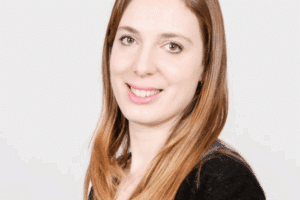Aesthetics play an increasingly important role in our society, and offices are no exception. Alexia Abtan, SFL Director of Investment and Innovation, and Frédéric Dabi, Managing Director of Opinion Ifop, explore the importance of “beauty” in the office, both as a factor of attractiveness for employees and a reflection of corporate identity, for its 11th Paris Workplace barometer.
Why did you decide to focus on the importance of aesthetics in the workplace?
Frédéric Dabi: It makes sense! The evaluation of an office, whether you’re working in it or visiting it, is often based on aesthetic criteria. Where the logic of results used to predominate, aesthetics now play an important role. It’s a trend that can be seen more widely in public spaces, particularly in the face of the phenomenon of “ugly” city entrances or the “France of traffic circles”.
Alexia Abtan: With our DNA as a developer of prime real estate in Paris, the question of aesthetics has evolved over time. Today, the importance of aesthetics in our buildings stems from the interaction between office, hotel and residential real estate. Designing projects four or five years before delivery requires us to take aesthetics into account, and it’s essential for us to measure these expectations objectively, and understand how they evolve.
What are the main findings of the study?
Frédéric Dabi: Today, 95% of employees believe that it’s important to work in a beautiful environment, and that their company should invest in office design to enhance its employer brand. It’s a win-win situation: employees are proud of their company, and the latter gains in attractiveness, loyalty and commitment. Offices become “all inclusive”, offering services directly within the building.
Alexia Abtan: As many of the people we interviewed told us, the notion of aesthetics converges with that of comfort. So it’s crucial to combine aesthetics, well-being and comfort. We also note the growing importance of nature. The presence of parks and green spaces at neighborhood level, and natural light at the scale of interior spaces, are the first elements cited to define “beautiful”!
“Beauty reinforces the office’s status as a ‘safe haven’.”
Why do employees and employers have such high expectations when it comes to aesthetics?
Frédéric Dabi: The end of the seal between the workplace and the home has been accentuated by the health crisis. To attract employees, the office must be at least as pleasant as their home. In the Paris region, where many young employees live in small apartments, an office is all the more attractive if it looks good. And it’s working, with 57% of employees attached to their company in 2023, compared with 30% a few years ago.
Alexia Abtan: Two factors have contributed to the amplification of these trends. Firstly, the COVID-19 crisis has diversified working patterns and prompted companies to rationalize their office space. With less space, the emphasis is now on quality. But also the convergence of styles towards “Instagram-able” places, which no doubt explains why “hotel-style” offices top the list of desirable offices. People expect more from their offices, and the hotel world, which is by nature a service industry, is a strong reference point.
How can companies take advantage of these results?
Alexia Abtan: A beautiful office is a space that reflects the company’s identity. The aim is not to please everyone, but to make clear choices. As a real estate company, the emphasis must be on investment in common areas and the creation of modular private spaces. When offices are well designed, employees should be able to identify with them and take pride in them. Some even go so far as to show their families around!
Frédéric Dabi: Beauty reinforces the office’s status as a “safe haven”. When people feel better at work than at home, the office takes on a special importance, becoming part of a global, even intimate sphere. This trend is all the more marked in that our barometer shows a strong evolution: a majority of young employees, but not only them, consider their colleagues as friends.
And on a broader scale, how does the aesthetics of the workplace influence working life?
Alexia Abtan: The architectural homogeneity of Haussmann-style Paris, marked by variations in height, ruptures, planted spaces and water features, contributes to the city’s unique charm. This aesthetic contrasts with other, more recent, austere neighborhoods. The preservation of our heritage, though restrictive, forces us to be creative and adapt to make Paris not a museum city, but an open-air museum where you can both live and work.
Frédéric Dabi: Today, 79% of people prefer mixed-use districts, combining shops, housing and offices. The Paris Games left an unexpected legacy: it wasn’t so much sport in the stadiums that made an impression, but sport in the city. This idea of play in the public space symbolically extends to the office, which must follow this model.


